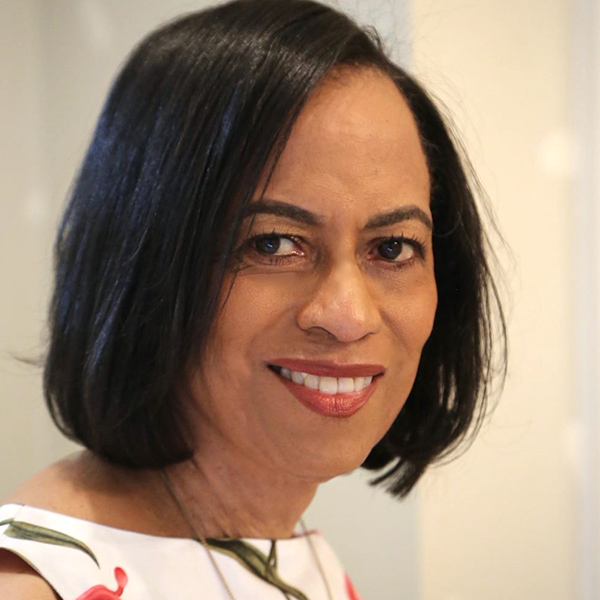Bigger isn’t always better, especially in nonprofit organizations, said Jeff Bradach, co-founder and managing partner of The Bridgespan Group.
Yet organizations of every size face difficult decisions about how to pursue their mission in a world of expanding need and shrinking resources, he said.
“It’s incredibly hard, because the choices in the kinds of organizations we’re talking about are very concrete, real consequences. People are harmed by [the choices not to do things],” he said. “So you have to believe that the positive impact of those choices outweighs those negatives.”
In his work at The Bridgespan Group, Bradach and his colleagues have studied nonprofit leadership and the issues involved in scaling organizations. Bridgespan is a nonprofit advisor and resource for mission-driven organizations, philanthropists and social sector leaders.
Bradach’s areas of focus are nonprofit strategy, transformative scale, social sector leadership and philanthropy. He is also leading Bridgespan’s efforts to establish a presence in India.
Bradach began his career as a consultant at Bain & Company and later taught at Harvard Business School. He is a graduate of Stanford University and holds a master’s degree in sociology and a Ph.D. in organizational behavior from Harvard University.
Bradach spoke with Faith & Leadership while at Duke University to give a lecture for the Foundation Impact Research Group, part of the Center for Strategic Philanthropy & Civil Society. The following is an edited transcript.
Q: What are the challenges and opportunities that are distinct between a small organization and a large organization in becoming economically sustainable?
I think the eternal challenge for nonprofit organizations with big, bold ambitions -- I would put churches and faith-based organizations in this category -- is the fact that the need is inevitably dramatically bigger than the scale of resources anybody has.
The challenge is figuring out how to decide what you focus on, how to decide what you draw the boundaries around -- what you’re going to commit to doing and doing with excellence.
I do think we have this mantra of “bigger is better” -- scale, growth -- without really asking, “Is it true?”
What is it that you’re not going to do, either because you think other people will, or simply because you can’t spread yourself that thin without compromising overall?
I think this is the core leadership challenge of both small and large organizations, because at either level, you’re confronted with the need being greater than the scope of the resources.
The fundamentals of deciding what you do, how you do it -- this is an eternal question without a preordained answer. I don’t think it’s automatically that more-focused is better than less-focused.
I think it’s a little bit more contextual. What is the mission of the organization? What are its goals? What’s the situation facing the population it’s serving? It is increasingly challenging to strike a strong balance when in fact resources are thinning and needs are growing.
What we find people doing often is clarifying sharply what it is that they want to really hold themselves accountable for, and from that, then making choices about what they do and what they don’t do.
It’s incredibly hard, because the choices in the kinds of organizations we’re talking about are very concrete, real consequences. People are harmed by [the choices not to do things]. So you have to believe that the positive impact of those choices outweighs those negatives.
Q: Do you have any recommendations for the process of discernment?
It’s iterative, in the sense that sometimes you’re posing hypotheses to yourself: if we focused in this way, what would that mean for the kinds of impact, the kinds of outcomes we’re having in the world? The process is one of getting the right set of people together to ask those fundamental questions.
I would say sometimes something that’s missing is actual, real data. Who is the community we’re trying to serve? What really are their needs? What other options are there in service of them? How do people in the community view the need?
One question the leadership team then will have to discern is whether or not the impact it’s holding itself accountable for will translate into being able to attract resources.
I think sometimes there’s an illusion that if we touch a whole lot of different things -- we’ve got a lot of irons in the fire -- we can attract the resources of different people.
Sometimes that may be true. But it also may be true that the organization might be better-suited to articulating a handful of things it’s really going to deliver, and that may be the way to attract more resources.
Q: For an organization that wants to expand the scale of a project, what do you see as the key questions that need to be addressed?
There’s a mix of internal and external things. It’s important to think hard about whether there is really a need to scale. Scale takes effort. It takes resources. It takes management time and so forth. So one key is to be really clear with oneself, because sometimes scale can be an end in itself.
There are things in the nonprofit sector that are local -- meaningfully local -- and should stay local. In these cases, there’s no reason for people to be asking, “Should you go to 10 cities?” No. You serve this neighborhood, this community, very well. What does it mean to keep doing that better and better versus taking on more?
Now the flipside is, leadership teams can look at the situation they’re in and say, “Actually, we think there is the opportunity to scale what we’re doing to have impact on a greater-sized population, a different geography, a different constituency.”
There the calculus is, do you have the management talent and capability to do it? Do you have a team that’s able to support the scaling? Do you have a strategy? What really is the plan for getting from Point A to Point B? What resources are you going to attract? What partnerships are required, and what is it actually going to take to do it?
How will it be financed? Is it going to be bootstrapped, adding on incrementally on the margin? That takes us back to the first question. If you don’t have it appropriately resourced, are you just stretching the organization in ways that put at risk the starting point?
It’s a giant commitment, so making sure that people are signing up for that and that the key stakeholders are on board with that is an important piece of the puzzle.
Q: Do you have any rules of thumb about that, any indicators?
That’s a good question. There is the “but for” test: but for us doing this, but for us moving into this other community, or but for us now serving this population, something wouldn’t happen, the outcome wouldn’t happen, the goals we’re trying to achieve wouldn’t happen.
Be really hard-edged about that, so that one is not seduced into thinking growth is good. I do think we have this mantra of “bigger is better” -- scale, growth -- without really asking, “Is it true?”
Because it’s a giant organizational commitment, no matter how big the organization is. If you imagine doubling in size from whatever your point is -- if you’re a little one going to being 2X little, or you’re a big one going to a 2X big -- it’s still a giant shift. That “but for” test is one important thing.
It’s also being clear about whether there are other players in the ecosystem serving that need. Is this population going to be better off if I expand and jump in and start bumping heads with somebody down the street? Or are there ways you could collaborate, or just different options for achieving that end?
I think being intentional about what you’re trying to achieve by scale is a key part of the puzzle.
It’s not that scale doesn’t matter, but you have to be thoughtful about where it might actually drive to different outcomes versus where it doesn’t.
Q: A few years ago, Bridgespan did a survey on the “leadership deficit” -- the gap between demand and supply for nonprofit leaders. Is that still a problem?
One of the biggest areas that determine the outcomes for any organization, big or small, is leadership. We just did some research on the systematic underinvestment in leadership capacity.
An organization can’t scale faster than the people in the organization can scale, so that the investment in people’s development is about building the organization’s capacity.
The [research shows an] underinvestment in organizations, regardless of size, in the development of their teams.
I think often one of the illusions is, “Oh we’re too small; we can’t send people to training.” Well, most development of leadership doesn’t happen in training. It happens actually on the job, with mentors, coaches, supervisors providing feedback, coaching and so forth.
There’s the 70/20/10 model of development, in which 70 percent of development is on the job, 20 percent of development is coaching and mentoring, and 10 percent is formal training. It’s a choice about whether you invest in your organization and your people this way.
One of the most interesting development examples that I have is related to the church I’m in [Village Church in Wellesley, Massachusetts]. It’s the Pastoral Residency Program, funded by Lilly Endowment Inc.
For me, it’s a very interesting thing that in a 15-year period, you have added to a community of leaders 10 or 20 leaders who either otherwise wouldn’t have been part of that community or who are now dramatically more effective in their work. That’s a profound impact.
It’s just been very intriguing, because the sustained commitment of focusing on a small number of leaders and really changing their career trajectories, changing their capabilities -- the effect of that over a decade or two decades is much more profound than we might recognize.
Q: Are there new economic models that you and Bridgespan see emerging in the social sector?
Two of the trends that I think are noteworthy in the social sector right now are around economic models and the flow of money.
One is that there’s increasingly emphasis on funding what works -- evidence-based practice. The importance of performance measurement and data and so forth is only growing.
So that is less a new economic model than a new economic reality. I think increasingly it’s going to be the case that if you don’t have evidence of the impact you’re having, donors and contributors of resources are going to say, “We’re not going to bet on you.”
It doesn’t mean you have to have big, fancy random-assignment studies. But it means that you have to be intentional about performance measurement. That’s one shift that we’re seeing partially precipitated by the downturn and scarcer resources.
The second thing is the use of for-profit entities -- impact investing -- for supporting organizations.
I remain quite skeptical of traditional non-profits that say, “Off to the side we’re going to start a restaurant, and out of a restaurant we’re going to make some money that’s going to fund our mission.” I think those are extremely hard.
There are business models where you intersect the mission and the economics that work. But setting up a separate business that’s going to generate income for the core business is extremely hard to do.
I think the other part of the business model that is an important thing to keep an eye on is the emergence of different for-profit models serving low-income populations.
When you can find things that work, they often will scale much more rapidly, those kinds of solutions, because there’s actually a market. It’s a self-propelling mechanism.
Q: So the market function is integral to the social good that it’s doing.
There’s a lot of attention now under the umbrella of impact investing, and the rhetoric has way outpaced the underlying reality. I mean, I think it’s still so nascent and emergent. But it is worth watching, as it may signal a coming shift.







